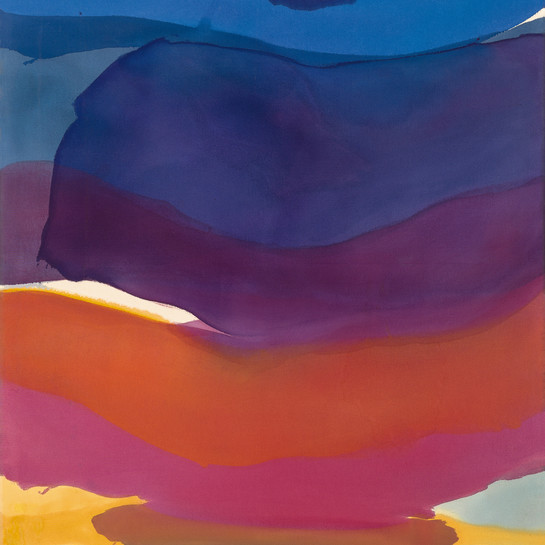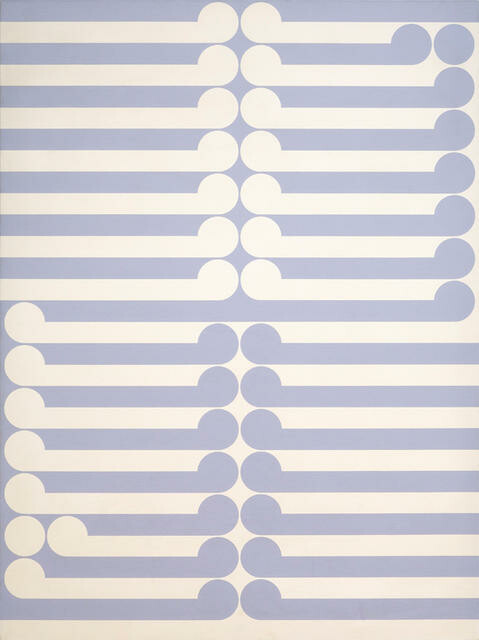Gordon Walters
Aotearoa New Zealand, b.1919, d.1995
Untitled
- 1977
- PVA and acrylic on canvas
- Gift of the Ministry of Foreign Affairs and Trade, Wellington, 2002
- Reproduced courtesy of the Gordon Walters Estate
- 1525 x 1140 x 25mm
- 2002/268
Tags: abstraction, koru (pattern), Māori (culture or style), monochrome, patterns (design elements), stripes
For the exhibition Untitled #1050 (25 November 2017 – 14 October 2018) this work was displayed with the following label:
“The form I use in my painting is not really the Māori koru; I think of it in terms of a line ending in a circle and then I break this sometimes. I use free circles. What I have done to the form really is to push it in a direction of geometry so that in my painting I can have not only a positive negative effect of black and white, but also a working of vertical and horizontal which is equally important.”
—Gordon Walters, 1975
Exhibition History
Brought to Light, November 2009
In 1947 Gordon Walters visited Theo Schoon in South Canterbury, where Schoon was recording Māori rock drawings. It was one of many occasions on which Walters drew inspiration from traditional Māori art. When he travelled to Europe in 1950, Walters realised that modern art had learned important lessons from the arts of the Pacific. Soon after, he began working with the koru, or fern bud, motif – a Māori decorative form used on rafter paintings, incised gourds and in tattooing. In the extraordinary series of abstract paintings that resulted, this simple form expresses a vast range of dynamic relationships.
This modernist abstract work is largely concerned with the interplay between positive shapes and negative spaces. In developing the shapes, Gordon Walters has taken the koru, or fern bud, and stylised it into a simple horizontal bar with a circular end. The spiral koru features widely in traditional Māori art. Walters used a hard-edged style in his paintings and drawings, with no obvious brushstrokes or tonal modulation. There is a suggestion of Op(tical) Art in his geometric forms, although Walters was not part of this movement.
Born in Wellington, Walters studied art at Wellington Technical College while working as a trainee commercial artist. He travelled to Europe in 1950, where he studied the paintings of Piet Mondrian (1872–1944), as well as the work of French geometric abstractionists. Walters returned to Wellington in 1955 and began painting fulltime in 1966. He later moved to Auckland before shifting to Christchurch in 1976, where he lived until his death. He is regarded as one of New Zealand’s leading abstractionist artists. (Contempoprary Collection hang, 2007)

